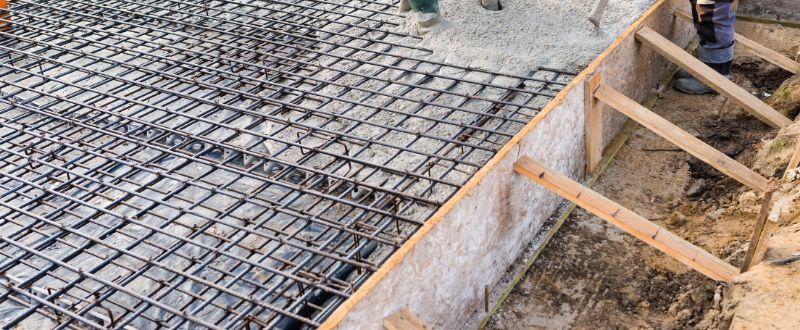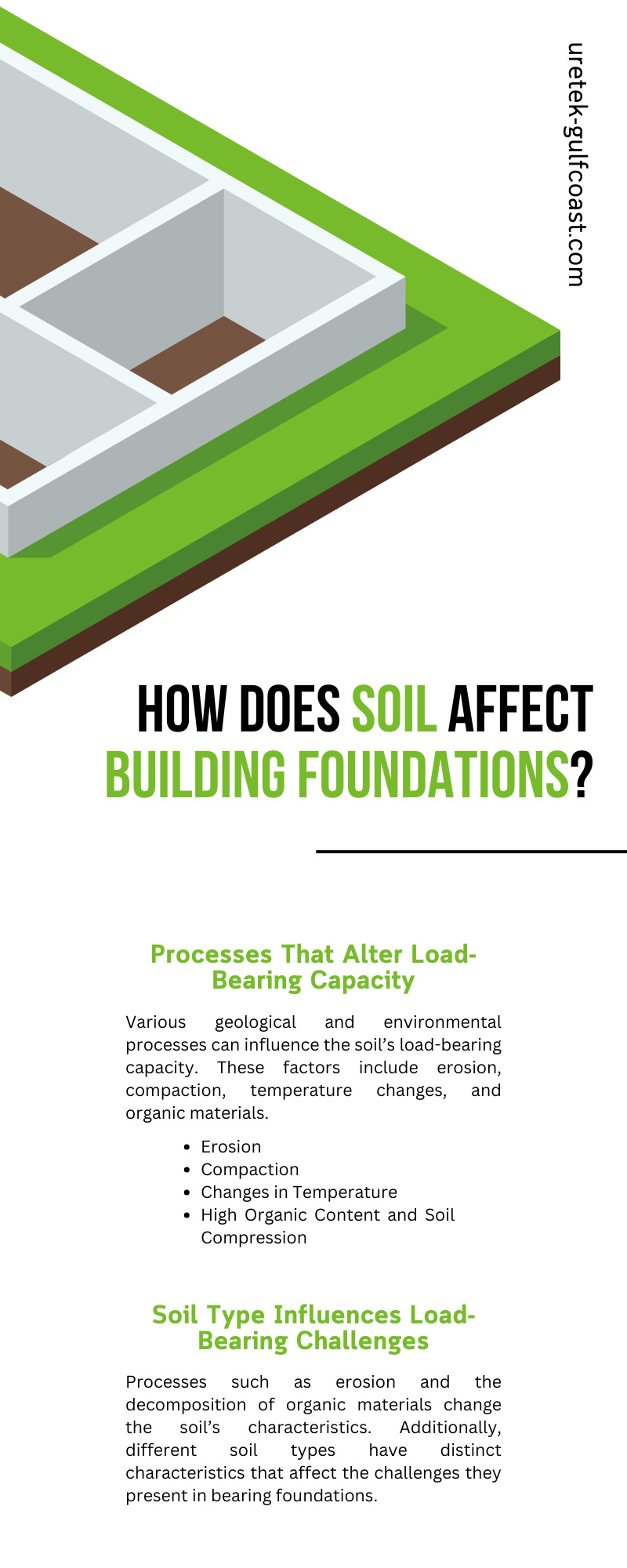Soil supports every foundation, underpinning the structure of buildings and infrastructure. Its characteristics are crucial in determining a construction’s longevity, stability, and resistance to environmental stresses.
Poor soil conditions can lead to severe foundation damage, resulting in costly repairs and compromised structural integrity. Explore the various ways in which soil can affect building foundations to understand how to protect your property.
Processes That Alter Load-Bearing Capacity
Various geological and environmental processes can influence the soil’s load-bearing capacity. These factors include erosion, compaction, temperature changes, and organic materials. Examine these factors in greater depth to understand how they affect the soil’s load-bearing capacity.
Erosion
This process, often driven by wind or water, can gradually remove soil from the building site, reducing the soil’s ability to support a foundation. Erosion typically occurs on slopes, where water or wind can easily carry away topsoil and expose the less stable subsoil.
Property owners can implement several strategies to restore and reinforce the affected soil, thus improving its load-bearing capacity. Planting vegetation with deep roots, especially on slopes, can also stabilize the soil and prevent soil erosion. Gutter downspouts should be tied into a drain system that directs water away from the foundation. Moreover, constructing retaining walls or terraces can physically support and maintain soil in areas plagued by erosion. Polyurethane foam injection repair erosion by filling gaps and aggregating loose soils.
Compaction
The pressure exerted by a building can cause loosely packed soil to compress over time. If this happens unevenly, it can lead to foundation settlement or cracks.
Polyurethane foam not only provides a lift to the unevenly settled foundation but also stabilizes the soil to prevent future compaction-related issues. And because the expanding polymer is so lightweight, it won’t weigh down the soil, preventing compaction from recurring.
Changes in Temperature
Extreme temperature changes, particularly in regions with freeze-thaw cycles, can lead to the expansion and contraction of soil, affecting its stability. Freeze-thaw cycles cause soil to expand as water freezes and contract upon thawing, which can destabilize the foundation by creating movement and potentially lead to cracks or misalignment. This cyclical process can also result in a phenomenon known as frost heave, where the expansion of freezing water in the soil pushes up against the foundation, compromising its structural integrity.
One method for protecting foundations from temperature-induced soil changes is to ensure proper drainage around the foundation. This involves installing systems, such as gutters and sloped landscaping, to divert water away from the base of the building.
High Organic Content and Soil Compression
Organic content comprises decomposed plant and animal material, commonly known as humus, within the soil composition. This occurs naturally over time as organisms die and decompose, integrating into the soil and enriching it. High organic content is common in topsoil layers and in areas with abundant plant life, where ongoing death and decomposition of organisms continually contribute to the soil’s organic matter pool.
As the organic matter breaks down, it can cause the soil to compress, leading to potential foundation settlement. To counteract this, builders often remove the topsoil layer, which contains the majority of organic matter. If the organic content is too high, the soil may need to be replaced or treated before construction.
Soil Type Influences Load-Bearing Challenges
Processes such as erosion and the decomposition of organic materials change the soil’s characteristics. Additionally, different soil types have distinct characteristics that affect the challenges they present in bearing foundations. For instance, clay soil expands when wet and shrinks when dry, which can lead to ground movement that affects the foundation. On the other hand, sandy soil compacts easily under heavy loads, which can result in uneven settlement.
A Deeper Look at Clay Soil
Clay soil dramatically expands and contracts with changes in moisture content, and these changes can affect the stability of the foundation, causing movement and potential damage. The water content in clay soil significantly influences its volume and consistency. When this soil type absorbs water, it expands, exerting pressure on the foundation, and when it dries, it shrinks, creating voids that can lead to foundation settlement or even collapse.
Expanding Soil Exerts Pressure
The pressure exerted by clay soil on the foundation can cause severe structural damage, such as cracks in the walls and floors, doors and windows sticking or not fitting in their frames, and uneven or sinking floors. These signs indicate that the foundation may be shifting under the pressure, posing risks to the structural integrity of the entire building.
Soil Voids Create Instability
Voids in the soil are empty spaces that can form as clay soil dries and contracts, leading to uneven ground surface and creating unstable conditions for a foundation. They can cause the foundation to settle or even collapse from the lack of support.
Signs of voids include visible sinkholes in the yard, cracks in your building’s walls or floors, and doors or windows not closing properly. Polyurethane ground stabilization services can fill the voids with lightweight expanding foam that also helps stabilize the soil.
Groundwater’s Effect on Foundations
Groundwater is the water found beneath the Earth’s surface, residing in soil and the cracks of rock formations. It originates from rain or snow that infiltrates the ground and moves downward until it encounters a layer of rock or clay, accumulating in what’s known as an aquifer.
Groundwater can have a substantial impact on building foundations. When the water table—the upper surface of the groundwater—is high or fluctuates significantly, it can lead to changes in soil volume, especially in clay soils. This expansion and contraction of soil can compromise the stability of the foundation, causing damage such as cracking or buckling.
Moreover, an elevated groundwater level can increase the hydrostatic pressure exerted on the foundation, potentially leading to moisture seepage into the building. In extreme cases, excessive groundwater can lead to soil liquefaction during an earthquake, dramatically increasing the risk of foundation failure.
Soil affects the stability and safety of building foundations based on its responses to environmental changes. Effective management of these variables, including proper water drainage, landscaping, and ground stabilizing interventions, is key to maintaining the foundation’s integrity. Recognizing and addressing these soil-related challenges prevents costly, potentially hazardous foundation damage.
If you’re facing the challenges of unstable soil around your Houston property, don’t wait for the damage to escalate. Contact URETEK ICR Gulf Coast today and learn how our water-resistant, lightweight polyurethane foam injection solutions can quickly and effectively stabilize your soil and foundation.


